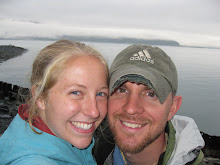Monday, December 14, 2009
Educational Philosophy Movie
Sunday, November 22, 2009
Article Assessment No. 3
"Orchestrating the Media Collage"
by Jason Ohler
Overview
This article introduces reading and writing multiple forms of media and how integrating the two creates an entirely new meaning of the word “literacy.” By definition, literacy is a noun, meaning the ability to read and write. However, “Orchestrating the Media Collage” by Jason Ohler points out that the deeper meaning of literacy goes far beyond the walls of English classrooms. Ohler said that literacy can include reading and writing competencies in math, research and even citizenship. But the most important form of literacy, he said, is digital literacy. It’s no secret we live in a technologically driven world and those who fail to keep up with its ever-evolving jargon will be left in the dust of discarded textbooks.
In the “Writing What You Read” section, Ohler explains that having an ability to read and write today isn’t good enough. Digital expression can be narrowed into three categories: 1. New media demand new literacies, such as sound, graphics and images; 2. New media coalesce into a collage with Web pages, blogs and digital stories; 3. New media are largely participatory, social media by using collaborative publications such as Facebook, GoogleDocs and YouTube. These categories have changed the Internet from a read-only resource to a worldly community where the exchange of information is nearly limitless and forces the public to be more hands on and creative with their work.
Ohler lines out eight guidelines for teachers who want students to hone their digital literacy skills: 1. Shift from text centrism to media collage; 2. Value writing and reading now more than ever; 3. Adopt art as the next R; 4. Blend traditional and emerging literacies; 5. Harness report and story; 6. Practice private and participatory social literacy; 7. Develop literacy with digital tools and about digital tools; 8. Pursue fluency. Ohler ends the article urging teachers who feel overwhelmed with technology to step back and chill out – teachers don’t need to know everything; let the students discover technology for themselves because it’s more than likely they know more than you do.
Monday, November 16, 2009
Energy Conservation Project
Tuesday, November 3, 2009
Article Assessment No. 2
"The Read/Write Web"
by Bill Richardson
Overview
This article introduces a concise timeline of the World Wide Web and how it has evolved from a "read only" resource to a read/write tool, where anyone can publish their ideas and products from anyplace in the world with an Internet connection. Early days of the Web only gave people the ability to consume information - a one-way street for users. But now, with the introduction of blogs, forums and file-sharing programs, the Web is a new way to create online communities - two-way streets with plenty of detours.
The new read/write Web has changed the way people do business, run political campaigns, educate children, receive/report news and spend leisurely time. Tim Berners-Lee, who helped develop the World Wide Web in 1989, had a vision to make it, “A place where we (could) all meet and read and write.” His vision has evolved into a tool in which our world’s economy could no longer function without.
According to Will Richardson’s article, a 2003 survey by the Pew Internet and American Life Project, more than 53 million American adults (or 44 percent) contributed to content that is found online. In 2006, Technorati.com, a blog tracking service, found more than 25 million blogs. The word blog is short for Weblog, a resource people use for creating personal journals, building sites for colleagues, or filtering news for large or small audiences. Today hundreds of thousands of blogs are created daily and even more blog postings are being added to the unlimited amount of space on the World Wide Web.
Monday, October 26, 2009
Energy Conservation Project Overview
- How much money will I save by reusing sandwich and freezer bags? Will it make a dent in my budget?
- Reusablebags.com, an all-you-need-to-know Web site on how to reduce your impact, resuse what you've got and recycle your plastic. It's message is using the four R's: reduce, reuse, recycle and react. It's a user-friendly Web site and I'm looking forward to researching it.
- I will keep a daily log on what I did to reduce and reuse (sandwich bags, freezer bags).
- I will tally each plastic bag and compare it to the amount of plastic bags an average person uses in a week.
Tuesday, October 6, 2009
AnthroTech Assignment
Monday, September 28, 2009
Article Assessment No. 1
“Digital Natives, Digital Immigrants"
by Marc Prensky
Overview
This article introduces Digital Natives versus Digital Immigrants and explains how the discontinuity between these types of people has become a major issue in our educational system. Digital Natives are those who grew up with technology – video games, computers, Internet – and can fluently speak techie lingo.
Digital Immigrants, on the other hand, are those who struggle to keep up with technology. They do things the old-fashioned way and take the scenic routes when traveling Information Super Highways. The author describes discontinuities in generations as a singularity, “an event which changes things so fundamentally there is absolutely no going back.”
Schools with Digital Natives and Digital Immigrants not only have generation clashes, but also students who are not engaged. Most students would fit into the Digital Native category, while many old-school teachers fall into Digital Immigrant status. How does this affect the inside of a classroom? Here’s a striking detail the author points out: On average, college graduates spend less than 5,000 hours reading, more than 10,000 hours playing video games and 20,000 watching television. To Digital Natives, school feels like they stepped into a foreign country.
Monday, September 14, 2009
Futuring
Sunday, September 6, 2009
About Me

